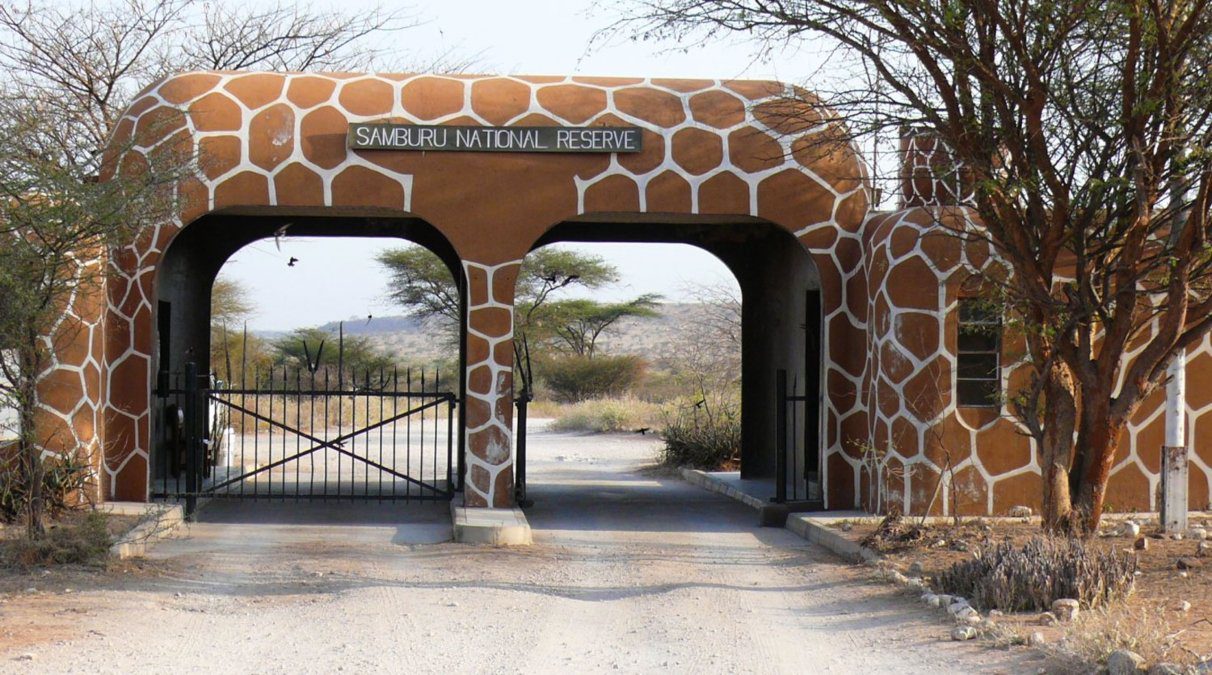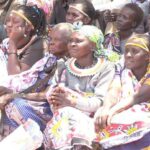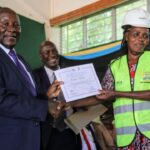Samburu County, a vast and vibrant slice of Kenya’s Rift Valley, is home to 15 electoral wards spread across three constituencies. Covering 21,000 square kilometers and hosting a population of over 310,327 (2019 Kenya Census), this county blends semi-arid plains with rich cultural heritage. For Kenyan business professionals, understanding these wards—from Maralal’s bustling hub to Nyiro’s remote expanses—unlocks a region brimming with untapped potential.
This detailed rundown lists all 15 wards in Samburu County, dives into their economic pulse, and spotlights opportunities for 2025. Tailored for business minds, it’s packed with data and fresh angles on how Samburu’s unique mix can fuel your next move. Let’s explore these wards and see what’s on the horizon in this rugged frontier.
Samburu County: A Land of Opportunity
Straddling Kenya’s northern Rift Valley, Samburu County borders Turkana to the northwest, Marsabit to the northeast, Isiolo to the east, Laikipia to the south, and Baringo to the southwest. Governed by Moses Kasaine Lenolkulal, its headquarters sit in Maralal town, a growing center in a county where pastoralism drives 80% of livelihoods (County Government of Samburu, 2023). Its three sub-counties—Samburu West, Samburu North, and Samburu East—split into 15 wards, each with an MCA steering local priorities.
Samburu’s economy, pegged at over KSh 15 billion annually (county estimates), thrives on livestock, tourism, and small-scale trade. With 103,144 registered voters (IEBC 2022), its wards represent a rising consumer base. Here’s the full ward lineup, broken down by constituency.
Full List of Wards in Samburu County by Constituency
Samburu’s 15 wards span three constituencies, each with distinct economic flavors. Below, they’re mapped out with a peek at what makes them tick.
Samburu West Constituency
Population: ~120,000 (est.). The county’s heartbeat, mixing urban trade with pastoral roots.
- Lodokejek Ward
- Profile: Rural, pastoralist base near Maralal.
- Business Angle: Livestock markets or solar energy.
- Suguta Marmar Ward
- Profile: Trading hub with pastoral ties.
- Business Angle: Retail or consumer goods.
- Marmar Ward
- Profile: Agricultural with small markets.
- Business Angle: Farm inputs or microfinance.
- Losuul Ward
- Profile: Pastoral with tourism potential.
- Business Angle: Eco-tourism or cultural ventures.
- Maralal Ward
- Profile: Urban core, county HQ, and commercial center.
- Business Angle: Real estate or service outlets.
- Poro Ward
- Profile: Rural, livestock-driven near forests.
- Business Angle: Timber trade or agro-processing.
Samburu North Constituency
Population: ~100,000 (est.). A northern expanse with pastoral and trade prospects.
- El-Barta Ward
- Profile: Remote, pastoralist stronghold.
- Business Angle: Mobile banking or livestock trade.
- Nachola Ward
- Profile: Rural, near Ndoto Mountains.
- Business Angle: Tourism or water solutions.
- Ndoto Ward
- Profile: Scenic, pastoral with forest edges.
- Business Angle: Eco-tourism or renewable energy.
- Nyiro Ward
- Profile: Vast, livestock-focused near Baragoi.
- Business Angle: Meat supply or veterinary services.
- Angata Nanyokie Ward
- Profile: Pastoral with small trade centers.
- Business Angle: Retail or solar products.
- Baawa Ward
- Profile: Rural, near Turkana border.
- Business Angle: Cross-border trade or logistics.
Samburu East Constituency
Population: ~90,000 (est.). A tourism and pastoral mix with urbanizing pockets.
- Waso Ward
- Profile: Near Samburu National Reserve, tourism hub.
- Business Angle: Safari lodges or hospitality.
- Wamba East Ward
- Profile: Urbanizing near Wamba town.
- Business Angle: Retail or housing.
- Wamba West Ward
- Profile: Pastoral with trade growth.
- Business Angle: Consumer goods or transport.
- Wamba North Ward
- Profile: Rural, livestock and small markets.
- Business Angle: Farm supplies or micro-enterprises.
Economic Engines of Samburu’s Wards
Samburu’s wards power an economy rooted in pastoralism but branching into new terrain. Livestock—over 2 million cattle, goats, and sheep—generate KSh 8 billion yearly (county data). Tourism, anchored by Samburu National Reserve in Waso Ward, pulls in KSh 2 billion annually, with 60,000 visitors in 2023 (Kenya Tourism Board). Small-scale agriculture, like maize and beans, adds KSh 1 billion, thriving in wetter wards like Marmar and Poro.
Key stats:
- Livestock: 70% of households own animals, per 2019 Census.
- Tourism Revenue: Up 10% yearly since 2020, driven by reserves.
- Population Density: 15 people per km², with Maralal at 16,000 residents.
Recent moves—like the A4 road tarmacking to Maralal (completed 2023)—boost connectivity, linking wards to Nairobi, 350 km away. This fuels trade and investment potential for 2025.
Business Opportunities Across Samburu’s Wards
Samburu’s 15 wards offer diverse prospects for 2025. Here’s where to jump in:
Tourism and Hospitality
- Target Wards: Waso, Ndoto, Losuul.
- Opportunities: Safari lodges, cultural tours, or campsites.
- Why: National reserves drew 60,000 visitors in 2023—demand’s rising.
Livestock and Agri-Business
- Target Wards: El-Barta, Nyiro, Lodokejek, Poro.
- Opportunities: Meat processing, dairy units, or feed supply.
- Why: Livestock exceeds local processing by 20%—a gap to fill.
Retail and Consumer Markets
- Target Wards: Maralal, Suguta Marmar, Wamba East.
- Opportunities: FMCG outlets, tech shops, or supermarkets.
- Why: Urban wards see 7% consumer growth yearly (county trends).
Renewable Energy and Infrastructure
- Target Wards: Nachola, Baawa, Angata Nanyokie.
- Opportunities: Solar grids or water systems.
- Why: Only 6% of homes use electricity (2019 Census)—off-grid needs soar.
Challenges Shaping Samburu’s Wards
Samburu’s wards face hurdles that sharp businesses can tackle:
- Infrastructure: Just 10% of roads are paved, slowing trade in Ndoto and Nyiro.
- Water Scarcity: 66% rely on unimproved water sources—drought hits hard (2019 Census).
- Education: Only 6% have secondary education, limiting skilled labor.
These gaps spell niches—think logistics, water tech, or training programs. In 2023, 34% of residents used improved water sources, with Maralal at 72%—a stark urban-rural divide ripe for solutions.
Samburu’s wards are at a crossroads. Tourism’s rebound—up 10% yearly—pairs with livestock wealth to create a dual-engine economy. Wamba East’s urban drift and Maralal’s road link signal growth hubs, while remote wards like Baawa could tap Turkana trade routes.
Economic Impact: By the Numbers
Samburu’s wards drive a KSh 15 billion+ economy:
- Livestock: KSh 8 billion from 2 million animals.
- Tourism: KSh 2 billion from 60,000 visitors.
- Trade: KSh 3 billion via urban wards like Maralal.
With 712 polling stations (IEBC 2022), these wards pack voter—and buyer—power. Education lags—6% with secondary schooling—but 26% have primary-level skills, a trainable workforce for businesses.
How to Engage Samburu’s Wards
For business pros eyeing 2025:
- Target Smart: Match your move—tourism in Waso, retail in Maralal—to ward strengths.
- Hit the Ground: Meet MCAs in Suguta Marmar or traders in Wamba East.
- Sync with Plans: The KSh 5 billion 2024/2025 budget boosts tourism—align with it.
- Leverage Digital: M-Pesa rules even in El-Barta—go online to scale.





